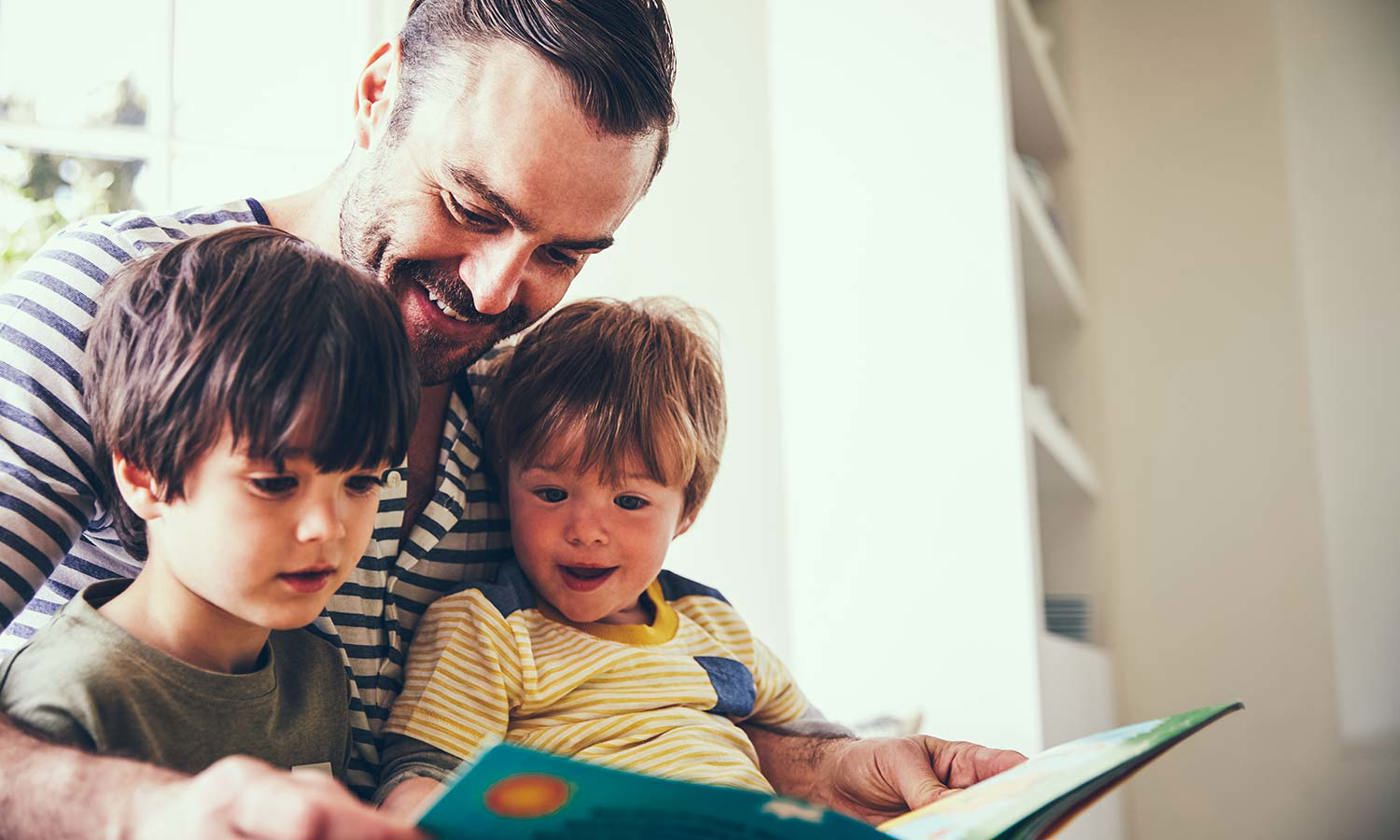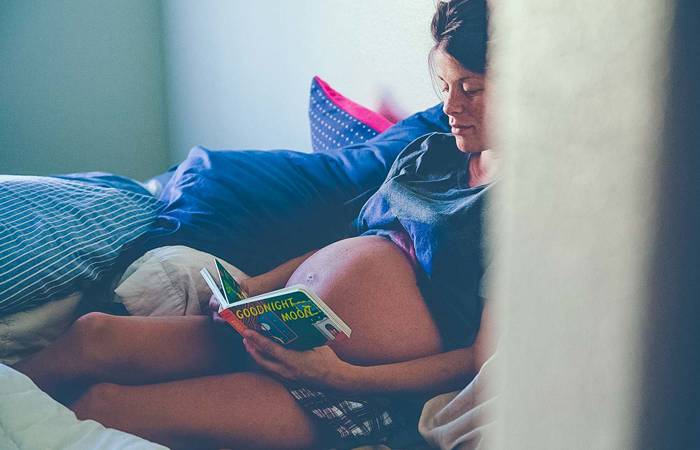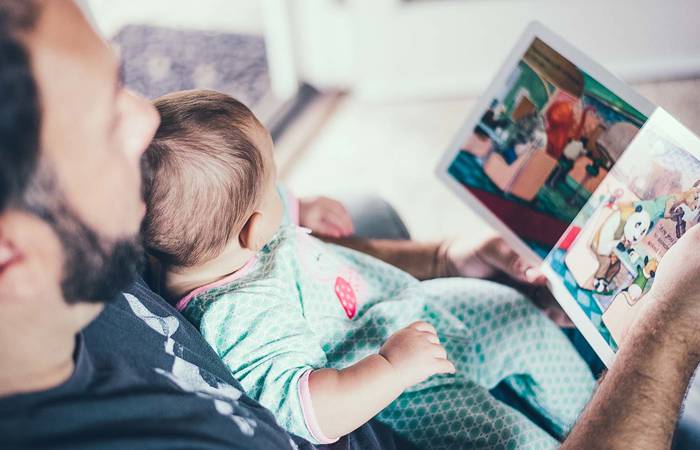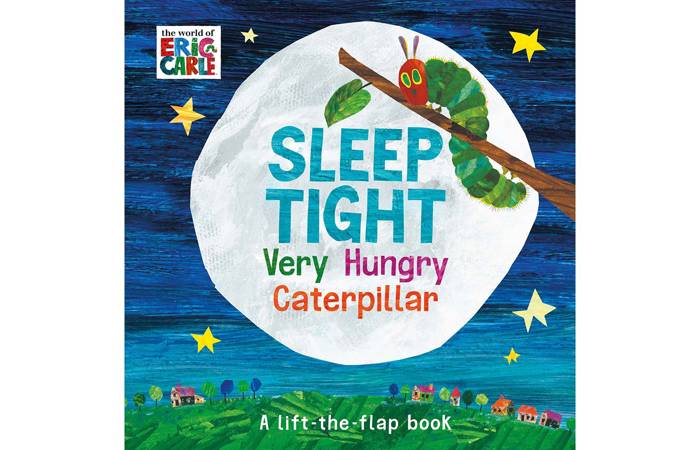Like what you see?
Sign up to receive more free parenting advice.
Thank you for subscribing to our newsletter!
Early Learning

Credit: iStock.com/monkeybusinessimages
We have long known that reading is good for children. In fact, there’s plenty of research out there showing just how reading leads to improved language skills. But one researcher has taken that knowledge a step further and figured out how to ensure that the time we spend reading to our children is having the best possible effect on their brain development.
“We know a lot about reading to our children. We hear that the more we read the better. This is correct. But less often we hear about how to read, and what is it about reading that makes it more useful for children,” says Dr Ameneh Shahaeian from Australian Catholic University’s Institute for Learning Sciences and Teacher Education.
In a study that was conducted over 18 months Dr Shahaeian worked with about 300 parents who were recorded while reading a picture book to their children. The researchers wanted to learn if the way the stories were read had an impact on the children who were being read to.
The challenge? They had taken out all the words, so it was up to the parents and carers to create the story, including the level of detail and what they chose to focus on.
"Parents are different in the ways that they tell a story. Some make it short while others make it long. Some speak to the children about it as they go through the pages, while some say 'I will read it to you and then we can talk about it'," Dr Shahaeian says.
What she found, when testing the children on their executive function (including memory and self control) after the fact, was that a few key techniques had a distinct improvement on the child's cognitive development.
Parents are busy and some might think that if they do it quickly, it’s done. But it’s more important to do it ‘with’ your children, even if you don’t finish the story.Dr Ameneh Shahaeian
The first contributing factor was a parent’s ability to help their child think about things that weren’t actually seen on a page.
“Things happen very fast in picture books. You don’t always know what is happening from one picture to the other. Some parents put effort in to imagine what is going on, and ask questions from their children as part of the joint effort in trying to understand the story.
“We found parents who make the path of reading mutual, like a joint exercise, were helping their children more,” Dr Shahaeian says.
It supports the understanding that when it comes to reading to children, quality trumps quantity.
“Parents are busy and some might think that if they do it quickly, it’s done. But it’s more important to do it ‘with’ your children, even if you don’t finish the story,” Dr Shahaeian says.
Asking questions like “Why do you think they did this?” or “Where do you think the mother was going?” can help parents draw out their child’s vocabulary, but it will also help them to work as a team to create logical links between the parts of the story that may not be pictured.
“While it is good to make the story interesting with details, the most important details to highlight are the things that make the story more meaningful or logical to help our children develop their critical thinking skills,” she says.
The study also found that reading can help children understand what may not be seen.
“Understanding mental states – such as what goes on in one’s mind, like desires and emotions – is very easy for adults, but it’s a developmental milestone for children,” Dr Shahaeian says.
“Children gradually come to understand that people have these internal mental states that we can’t see. Parents who used this kind of vocabulary in their reading – things like ‘What do you think they are thinking?’ – can help their children to develop that understanding.”
While it is good to make the story interesting with details, the most important details to highlight are the things that make the story more meaningful or logical to help our children develop their critical thinking skills.Dr Ameneh Shahaeian
Reading through the ages
Queensland’s Teacher Librarian of the Year, Megan Daley, is a passionate advocate for starting the reading process early.
The former National Vice President of the Children’s Book Council of Australia and voice behind the website Children’s Books Daily has some advice on what children get out of reading at each age or stage.
Reading with newborns and babies
Megan says you should start reading to your children from the moment they are born. In fact, some parents start the process in utero.
“The whole idea of raising a reader is that newborns will start to recognise the sound of a parent or carer’s voice very early on, and start to get into the rhythm of language of a book or story. It’s an incredibly good way to expose them to the sound of the primary carers in their lives: those sounds are very soothing,” she says.
Song and story can both do this for newborns (Megan encourages both), but in terms of books, at this age Megan says anything goes.
“I would read my newborns Tim Winton or any adult book I was reading, it doesn’t matter what: they don’t understand the words but they do understand the rhythm of language,” she says.
She makes a distinction between literary language and our ‘everyday’ language.
“We often talk to our newborns and tell them things like, ‘I’m going to change your nappy now’, and that’s great. But exposing them to books gives them a richer variety of language – the two go hand in hand,” Megan says.
She points out that once babies can grasp a toy, they can grasp a book.
“It’s the perfect time to start reading picture books with high contrast, and unfussy, uncluttered illustrations. Large images are great for newborns,” she says.
Soft books are good for babies to hold onto.
“I often think if you give them a toy you may as well give them a book as well.
As early as nine to twelve months they start to understand the feel, touch and mechanics of a book. That’s when you see the start of a reader, even though they don’t understand the words for a very long time,” Megan says.
Megan also encourages carers and earlly learning centres to face picture books “out” so the cover is showing.
“Picture books for young children are absolute works of art,” she says.
Reading with toddlers
Toddlers are famous for not treating their books well. They might rip them, chew them, sit on them, or make them into a truck. Megan says to take it all in your stride.
“That’s all about discovering how a book works. I teach really young kindergarten children, and most only rip a book once or twice before they understand it’s something they treasure,” she says.
The active nature of toddlers means short, snappy books come into their own at this age.
“There are great books that ask children to be involved in the process, like the Books That Drive Kids Crazy series from Beck and Matt Stanton. Today’s toddlers are exposed to a lot of interactive technology: a book shouldn’t be any more of a static experience,” she says.
Reading with preschoolers
Although preschoolers still exhibit a lot of toddler behaviours and may not want to sit for a long time, Megan says a lot of them will sit for a long time to read a book. But beware: this isn’t the time to teach them to read.
“Preschoolers are going into early language development and early reading and writing behaviours. But at this age, whether it’s at home or in early education centres their life is not about school. It’s about the joy of learning and preparing them for school.
“The way you raise a reader is that first you imbue them with a love of reading, then when they go to school the mechanics of reading, learning phonics and vocab comes into play,” Megan says.
Instead, with preschoolers, Megan focuses her attention on comprehension.
“We talk and predict what might be going to happen in the book based on the cover and the end papers. Then we read the book through and discuss what happened, like characters, setting and storyline,” she says.
At this age, she continues to encourage children to understand the mechanics of how a book works, including how words run on the page.
“We often start to trace the words from left to right in a page, so they are starting to understand that words move from left to right in the English language. And we get them to identify the front and back covers, the spine and all the different parts of the book, so that when they go into school they have a good understanding of how books work and they can focus instead on the acquisition of reading skills,” she says.
She admits that it’s a natural response from a parent or an educator to want to teach their preschooler to read.
“But they are in school for twelve years. The best flying start parents and early educators can give really young children is that natural joy, play and curiosity around books,” she says.







